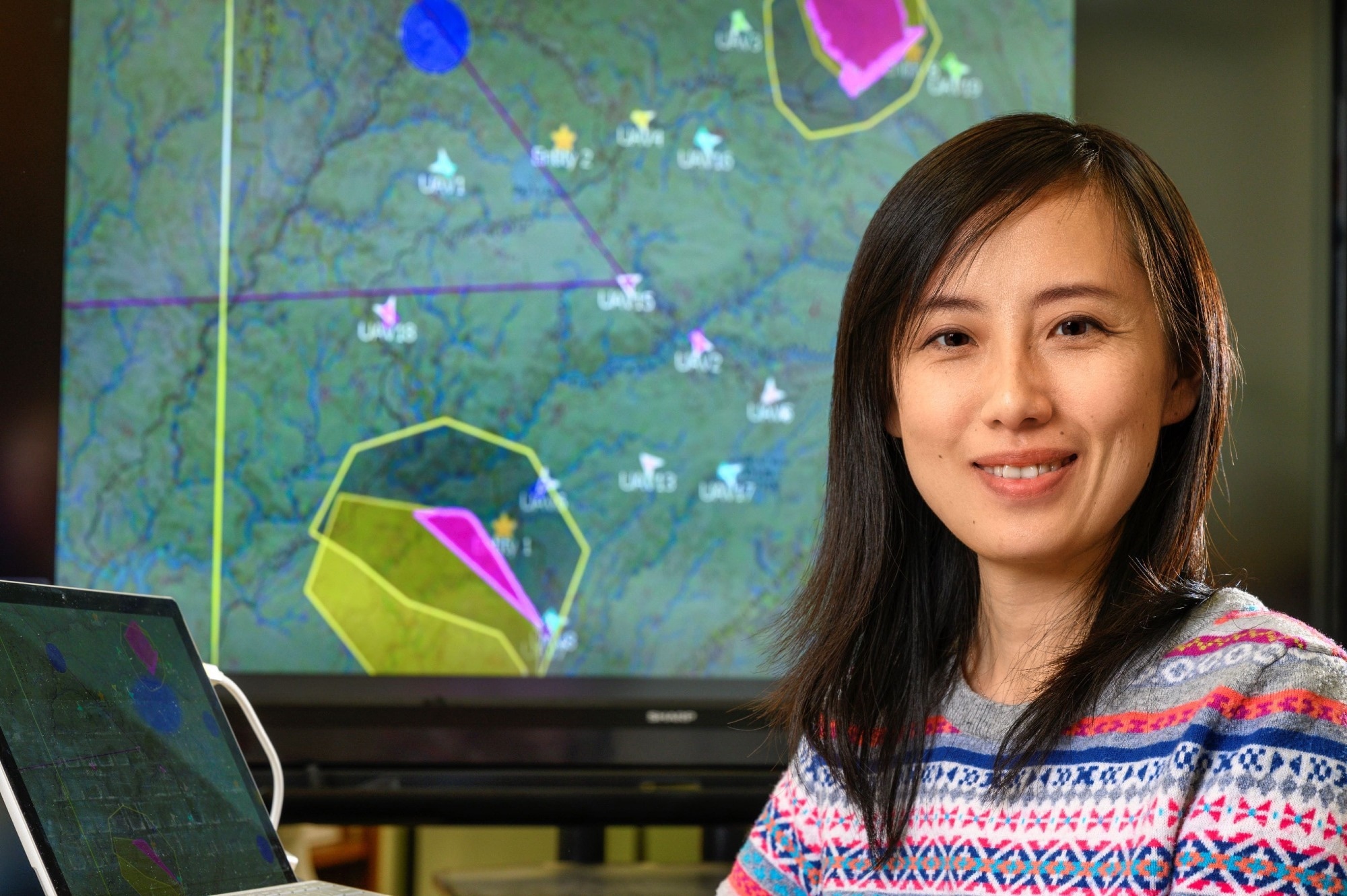A researcher from the University of Texas at Arlington is building an open-networked airborne computing platform to allow unmanned aerial vehicles (UAVs) to help first responders better coordinate their efforts during emergency responses.

Image Credit: University of Texas Arlington
UT Arlington is also developing a universal plug-in hardware unit that can fit into any UAV to allow this computing platform to be used.
The National Science Foundation (NSF) financially supports the research via a $1.8 million grant to UTA. The University of North Texas, San Diego State University, and the University of Puerto Rico at Mayaguez. Yan Wan, a UT Arlington Distinguished University Professor in the Electrical Engineering Department, received over $800,000 of that total.
UAVs have become more and more integrated in our everyday lives. They can do a lot of intelligent tasks. Now we must make them communicate with each other while they’re in the air and independent of a central computer management control.
Yan Wan, Distinguished University Professor, Electrical Engineering Department, University of Texas at Arlington
Networked airborne computing is a new computing concept that is reliant upon an airborne network formed by aerial vehicles with direct flight-to-flight communication links to achieve real-time computing in the air.
Our project should be able to transmit real-time videos to see what is happening during or immediately after a natural or manmade disaster. Emergency crews can then be dispatched directly to where help is needed. They won’t have to go to a site, then search, then help people in need.
Yan Wan, Distinguished University Professor, Electrical Engineering Department, University of Texas at Arlington
Wan stated that her team has been working on this kind of research for the past ten years. She got a 2017 NSF grant of almost $1 million to commence a networked airborne computing platform for UAVs. The team will be working on the project at the UT Arlington Research Institute and the main UT Arlington campus.
What we’re trying to accomplish is having a system of robots in the air. They have to talk to each other to do that. We’ve done fieldwork with the Denton and Austin fire departments and have been quite successful in those trial operations.
Yan Wan, Distinguished University Professor, Electrical Engineering Department, University of Texas at Arlington
While Wan stated the research group is concentrating on emergency usage of UAVs during natural or manmade disasters, the study also has a focus on the commercial applications of the system.
Wan stated, “With so many companies in the business of delivering goods now, it could have an application there as well. Think about coordinating many UAVs that are performing those deliveries. A universal control system that can plug into any UAV would go a long way toward coordination and ease of those deliveries.”
Diana Huffaker, UTA associate vice president for research, stated that the research reflects the marketplace and what is currently required from UAVs.
Huffaker stated, “Ensuring that transportation through the immediate airspace for emergency entities using UAVs is safe is essential to helping people. Giving those emergency personnel the needed information for what they will face keeps them and the people they’re helping safe, and it streamlines emergency plans for rescue.”
Wan joined UT Arlington in 2016 and is now the head of the Dynamical Networks and Control Lab, which is working to develop solutions for the modeling, evaluation, and control tasks in large-scale, dynamic networks and cyber-physical systems.
This consists of applications in airborne networking, air traffic management, systems biology, and complicated information systems.
She got an NSF CAREER award in 2015 and has since received over $10 million in research funding.